In 2020, The Samsung Galaxy Z Fold 2 Felt Like The Future
- Foldable display actually feels usable now
- Multitasking on a tablet-like screen is great
- Build quality is more reassuring
- This feels like what the future could be
- Very expensive
- Cameras not up to Samsung's non-folding flagships
- Foldable display still requires some TLC
- Third-party apps still have to catch up
In a year nobody could've predicted, where each day seemed hell-bent on eclipsing the former with fresh horror, surprise, or both, it's been tough to stand out as a category-defining gadget. The fact that the Galaxy Z Fold 2 managed to not only justify its existence as a $1,999 phone, but lay the groundwork for a whole new genre of foldable devices, is a testament to just how much Samsung got right in 2020. Despite what turned out to be largely self-imposed hurdles.
It's fair to say the original Galaxy Fold launch was a disaster. Not a "suddenly explodes and then is banned from planes in every country" level disaster; more the ironic "if you were going to predict how foldables would flounder, this is it" sort. Breaking displays, essential flexible OLED parts confused for throwaway screen protectors, that kind of thing. For a while it seemed like the whole category had been scuppered before it even got started.
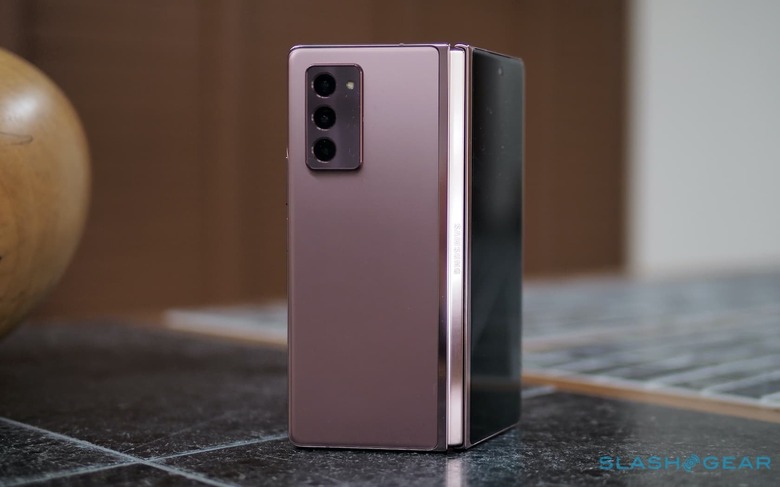
Samsung, for all its faults, can't be accused of not being able to commit though. Despite the memes, and the general skepticism which its initial failure hadn't done anything to dissuade, it came back with the Galaxy Z Fold 2.
That turned out to be a triumph. One with only early-adopters and those with the deepest pockets alone in mind, maybe, but a bonafide vision of the not-too-distant-future all the same.
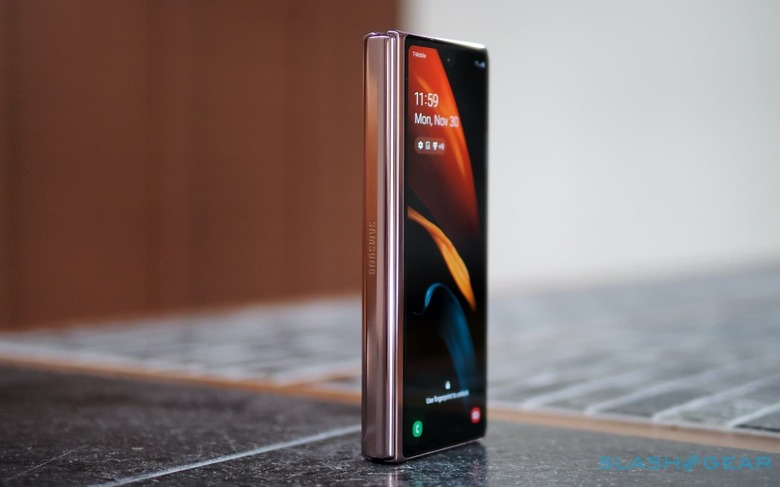
Yes, most of the specifications were shared with the Galaxy S20+ and the Galaxy S20 Ultra. What those metal and glass slabs lacked, though, was the sturdy hinge and the ability to open it up – your face glowing in the OLED bask, like Indiana Jones facing a chest of long-lost treasures – to find the much larger 7.6-inch Infinity Flex Display inside.
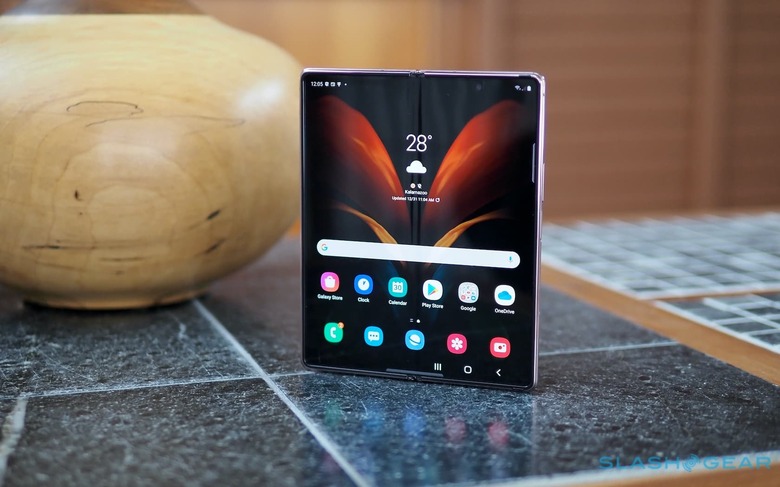
There were compromises to get there, of course. The second-generation phone is still thick when closed – 16.8 mm at its widest – and at 282 grams it's heavier than a Galaxy Note 20 Ultra. There's no water resistance rating, no memory card slot, and despite Samsung Display's best efforts there's still a not-inconsiderable gap between the halves when you fold it shut.
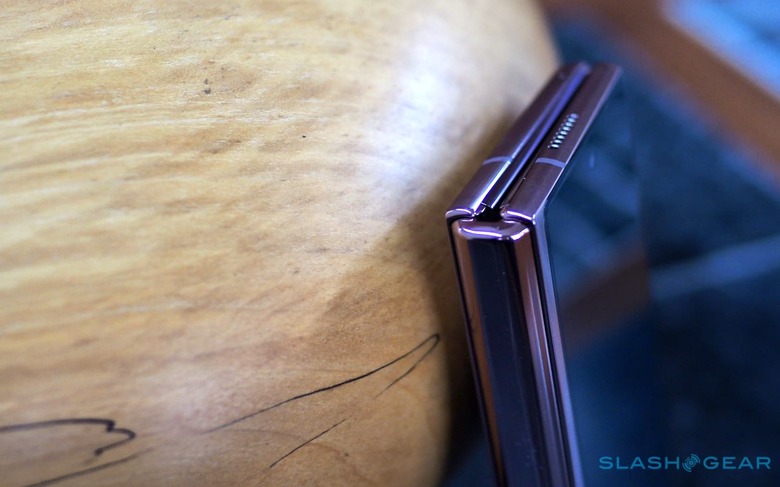
They pretty much pale, however, in daily use. The outer screen is still narrow, but its 6.2-inches and 2260 x 816 resolution are surprisingly useful. Weight and thickness still make one-handed use a chore – my thumb can reach the lower half of the display, but not stretch further up – but it's not the frustratingly limited experience of the first Fold's cover display.
What you really want is to open it, though, because then the chunky phone turns into a very usable little tablet. 7.6-inches may not sound like much difference from the cover display on paper, but with its near-square aspect ratio it's far bigger than you'd expect.
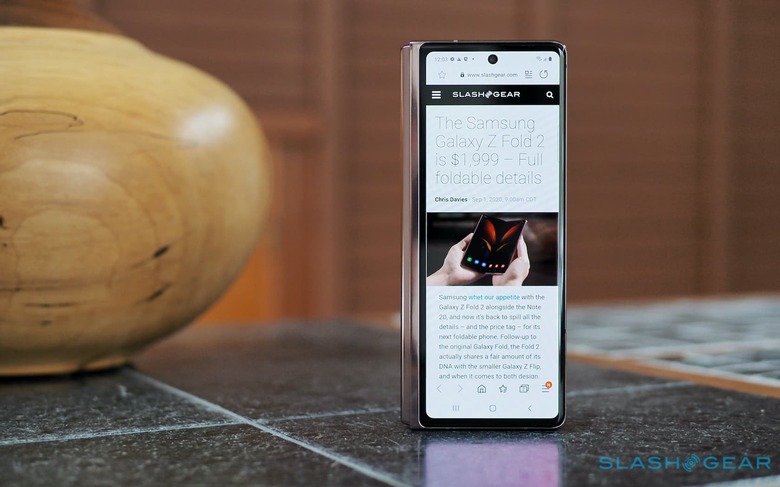
Certainly large enough to have a full-height app on one side, and then share what's left of the display with two other, smaller apps. That's how Samsung likes to show the Galaxy Z Fold 2 off in promo pictures, and if I'm honest I wasn't convinced it would be especially usable in practice. Turns out, if you have the right combination of apps – i.e. those which respect the customizations made to Android and Samsung's theme, to do the clever resizing and UI reflowing – it's actually oddly productive.
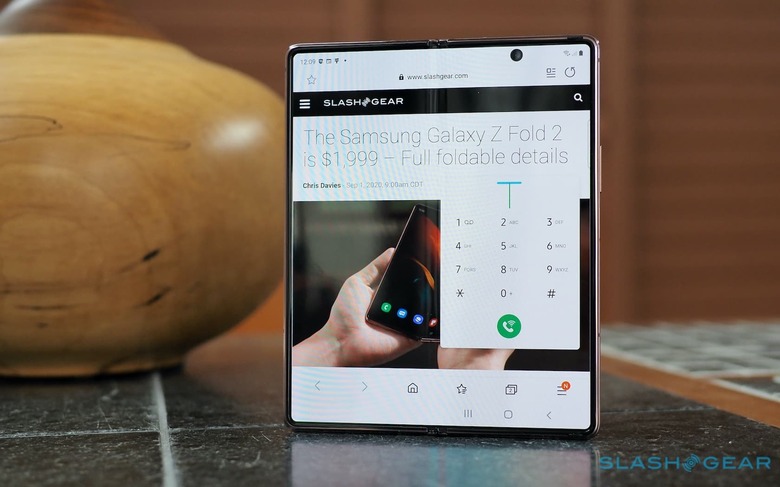
The crease down the center of the foldable OLED, which seems to generate a surprising degree of obsessed frustration in some quarters, actually isn't really noticeable after the first few days. Then again, I don't notice the iPhone notch any more now either, so your mileage may vary. The 120Hz refresh rate means scrolling doesn't have that jelly-like wobble across the screen either.
What makes the Galaxy Z Fold 2 feel really cohesive, though, is how well the outside and the inside play with each other. I didn't think it would be as useful as it is to start with a message open on the cover display, realize it would make more sense to have a bigger screen to read it and reply, and so open the phone up and have that message follow along too. Again, not every app works quite so well at this, but when it does what it's supposed to it feels borderline-magical.
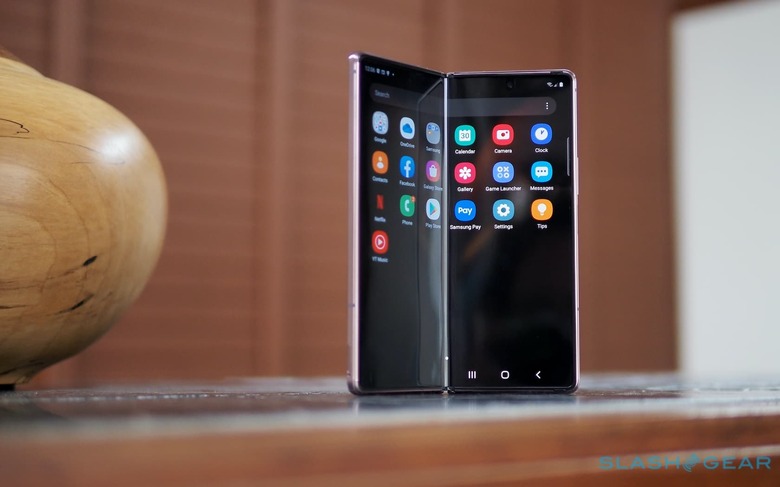
Elsewhere, if you've used a recent high-end Galaxy device then you'll find it familiar. The Galaxy Z Fold 2's cameras aren't as good as what you get on the Note 20 Ultra or the Galaxy S20 Ultra, but they're certainly good enough. The Snapdragon 865 is a known quotient too, though Samsung pairs it with a hefty 12GB of memory and multi-tasking has never proved an issue. It's weird not being able to expand the storage on a Samsung phone, though, and the company is keeping the 512GB version for a small handful of markets. The US gets just 256GB to play with, which seems miserly.
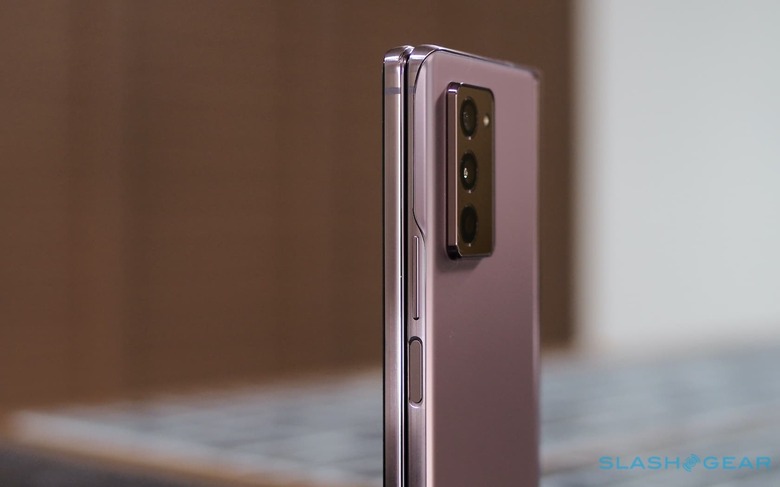
2020 hasn't exactly been friendly to premium devices. Even if there are people willing and able to spend upwards of four figures on your flagship smartphone, the optics of launching something like that during a pandemic and the ensuing economic slump feels tone-deaf. Not for nothing were the stand-out handsets of the year Google's Pixel 4a and Apple's second-generation iPhone SE, both landing at under $400.
Is there room in all that for a $2k foldable? Samsung has been reluctant to talk about sales expectations – or, for that matter, sales performance – for the Galaxy Z Fold 2, though it's undoubtedly fair to assume that demand was predicted to be relatively low by mass-market standards. As we've seen from the company in the past, in situations like these the goal is more about being visibly on the bleeding-edge than it is actually making the company a profit.
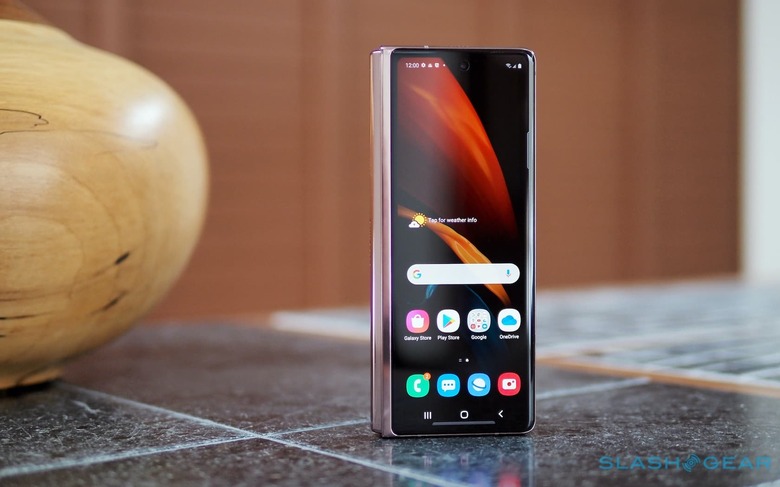
Just as important, though, the Galaxy Z Fold 2 is a stepping stone to foldables breaking into a broader market. Samsung has been upfront about its hope of launching more affordable versions in 2021, and handsets like the Galaxy Z Flip have already nudged down into more attainable territory. As we saw with OLED in the first place, things that start out as a luxury can transition to a mainstay with surprising pace.
What stands out to me among all that, though, is how cohesive even this early vision of a phone-tablet hybrid has been. The fact is that there are plenty of moving parts involved to get something like the Galaxy Z Fold 2 right, and I'm not just talking about the hinge. It's about hardware, yes, but also software: at the OS level, at Samsung's level, and then trying to secure buy-in from third-party app developers too.
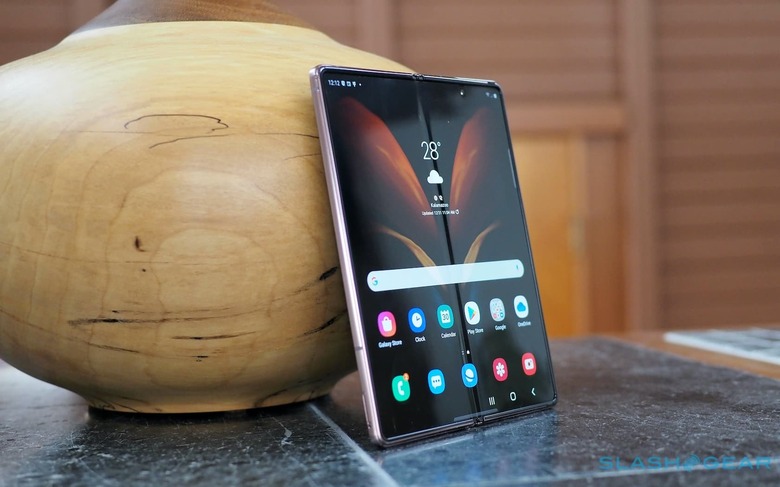
That's easier said than done, and the fact that so much software feels at home on the foldable is a testament to just how seriously Samsung – and Google – are taking the fledgling form-factor. Certainly, we're still only at the relative start of that journey, but it's one I'm a lot more confident in than I am about other unusual phone designs.
I can't really recommend the Galaxy Z Fold 2 to most people: it remains a curio, albeit a functional one, and a geeky luxury. All the same, as devices which make you feel as though you're living in the future go, nothing else in the mobile space this year has come close.
